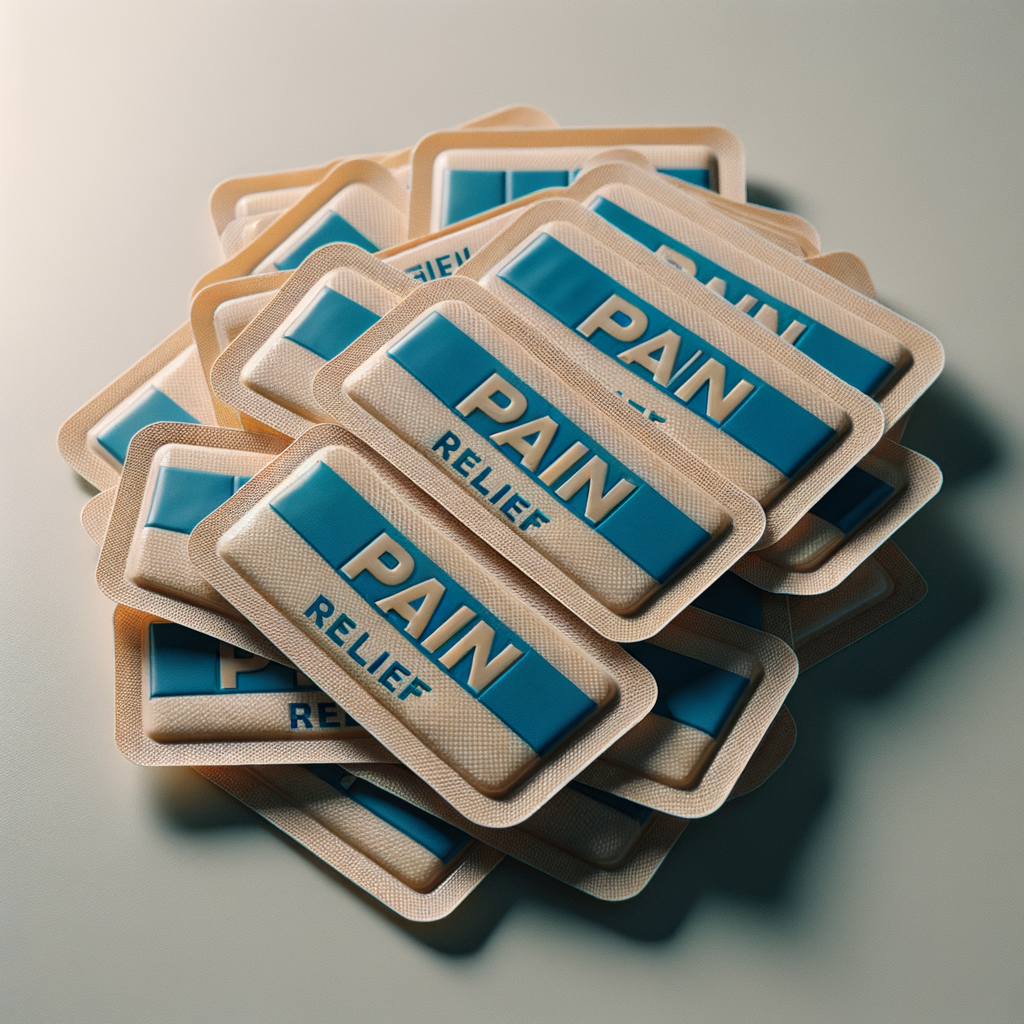In recent years, pain relief patches have gained significant popularity as an alternative method for managing various types of pain and discomfort. Whether you’re dealing with muscle aches, joint pain, or chronic conditions, these adhesive patches have become a convenient go-to solution for many individuals seeking relief. In this article, we will delve into the world of pain relief patches, exploring what they are, how they work, their benefits, potential side effects, and how to choose the right one for your needs.
What are Pain Relief Patches?

Pain relief patches, also known as transdermal patches, are adhesive patches infused with active ingredients designed to alleviate pain when applied to the skin’s surface. These patches are a topical application method that delivers medication directly through the skin and into the bloodstream, targeting the affected area with precision.
How Do Pain Relief Patches Work?

The mechanism behind pain relief patches involves the slow release of medication through the skin over an extended period. This controlled release ensures a steady and consistent flow of the active ingredient into the bloodstream, offering prolonged relief from pain and discomfort. Unlike oral medications, which may cause digestive side effects, patches bypass the gastrointestinal system, making them a gentler option for some individuals.
Types of Pain Relief Patches
Over-the-counter patches
Over-the-counter (OTC) pain relief patches are readily available in most drugstores and supermarkets. These patches typically contain non-prescription medications like lidocaine or menthol, known for their soothing and numbing properties. OTC patches are suitable for mild to moderate pain and are easy to use.
Prescription patches
Prescription pain relief patches are formulated with stronger medications, such as opioids or non-steroidal anti-inflammatory drugs (NSAIDs). These patches are intended for more severe pain and require a doctor’s prescription. They offer potent relief but come with a higher risk of side effects and addiction potential.
Benefits of Using Pain Relief Patches
One of the key advantages of pain relief patches is their targeted delivery system. They allow the active ingredients to reach the affected area directly, bypassing the digestive system and minimizing the risk of stomach-related side effects. Additionally, patches offer a continuous release of medication, providing sustained relief over an extended period.
When Should You Consider Using Pain Relief Patches?
Pain relief patches can be a viable option for various conditions, including arthritis, muscle strains, post-surgery pain, and more. They are particularly useful when you need localized pain relief without the risk of systemic side effects. However, consult your healthcare provider to determine if they are suitable for your specific situation.
Potential Side Effects and Precautions
While pain relief patches are generally considered safe, there are potential side effects to be aware of, including skin irritation, allergic reactions, or rare systemic effects. It’s crucial to follow the recommended usage instructions and consult a healthcare professional if you experience any adverse reactions.
Choosing the Right Pain Relief Patch
Selecting the appropriate pain relief patch depends on various factors, such as the type and severity of your pain, your medical history, and any existing medications you may be taking. Always consult with your healthcare provider to ensure you make an informed choice.
Tips for Using Pain Relief Patches Effectively
To maximize the benefits of pain relief patches, clean and dry the affected area before applying the patch. Ensure proper adherence and follow the recommended wear time. If you have any concerns or experience unusual symptoms, contact your healthcare provider promptly.
Conclusion
In summary, pain relief patches can be an effective solution for managing aches and discomfort, offering targeted relief with minimal systemic impact. Whether you opt for over-the-counter or prescription patches, it’s essential to use them responsibly and under medical guidance. Always consult with a healthcare professional to determine the most suitable pain relief option for your specific needs.
